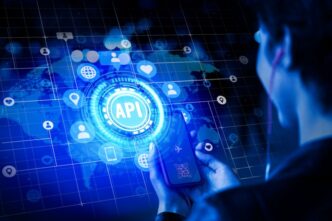Autonomous Artificial Intelligence (AI) agents are becoming increasingly vital across various fields from robotics and gaming to customer service and finance. While the idea of training your own autonomous AI agent might seem daunting, with the right tools and a clear approach, you can build and train one step-by-step. We’ll start by understanding what it is, then move on to selecting the right methods and tools, and finally, we’ll cover how to train and deploy your agent.
What Is an Autonomous AI Agent?
An autonomous AI agent is a system that can perceive its surroundings, make decisions, and take actions to achieve specific goals without needing human input. Some examples include:
– Self-driving cars
– Virtual assistants
– Automated trading bots
– Game-playing agents
Step 1: Define the Agent’s Goal & Environment
Before diving in, it’s crucial to clearly define:
– Goal: What you want your AI agent to accomplish (e.g., navigate a maze, play chess, answer questions).
– Environment: The context in which the agent will operate, whether it’s real-world, simulated, or digital.
For instance, if you want your agent to play chess, the environment will be the chess game framework, and the goal will be to win as many games as possible.
Step 2: Choose Your AI Approach
There are several approaches to building autonomous agents, including:
– Rule-Based Systems: These rely on predefined rules and logic (great for simpler tasks).
– Reinforcement Learning (RL): Here, the agent learns through trial and error, receiving rewards or punishments.
– Imitation Learning: The agent learns by mimicking the behavior of experts.
– Hybrid Methods: These combine multiple approaches, such as RL with deep learning.
Reinforcement Learning is particularly popular for autonomy because it allows agents to learn optimal strategies through interaction.
Step 3: Choose Your Tools and Frameworks
Opt for tried-and-true tools and environments that make building AI agents a breeze:
Reinforcement Learning Frameworks:
– OpenAI Gym (for simulated environments)
– Stable Baselines3 (comes with pre-built RL algorithms)
– RLlib (a scalable library for RL)
Deep Learning Libraries:
– PyTorch
– TensorFlow
Simulation Environments:
– Unity ML-Agents (think 3D game-like settings)
– CARLA (an autonomous driving simulator)
Programming Language:
– Python (the go-to choice for AI development)
Step 4: Craft the Agent Architecture
Outline the key components:
– Perception: This is how the agent takes in information from its surroundings (think sensory inputs and state representations).
– Policy: The decision-making framework or model (like neural networks).
– Reward Function: This is how we measure success (super important for RL).
Step 5: Set Up the Environment & Gather Data
For supervised or imitation learning, collect your datasets. For reinforcement learning, create the environment where the agent will engage:
– Use simulators or real-world data streams.
– Define initial states, possible actions, and transitions.
Step 6: Train the Agent
Kick off the policy model (starting with random weights for the neural network).
Run episodes or iterations where the agent interacts with the environment.
Give feedback through rewards.
Keep an eye on performance metrics and adjust hyperparameters as needed.
Step 7: Evaluate and Improve
It’s time to put your agent to the test with scenarios it hasn’t seen before. Take a close look at any failures and think about how you can enhance reward shaping or boost the model’s capacity. Don’t hesitate to try out different architectures or training techniques. And hey, consider using transfer learning to help speed up the adaptation process!
Step 8: Deploy the Autonomous Agent
Once your agent is trained and validated, it’s time to roll it out:
– Integrate it into your applications or hardware.
– Keep an eye on its performance and safety in the real world.
Bonus Tips for Training Autonomous AI Agents:
– Start simple: Tackle basic environments before diving into more complex tasks.
– Whenever possible, leverage pre-trained models.
– Use cloud GPU resources to speed up your training.
– Collaborate and learn from open-source projects and research papers.
Conclusion
Training your own autonomous AI agent is all about striking the right balance—defining clear goals, selecting the right AI methods, creating a solid training environment, and going through cycles of training and improvement. With the tools and frameworks available today, achieving autonomy is more within reach than ever.
So, start small, experiment frequently, and gradually enhance your AI agent’s capabilities. Happy building!










